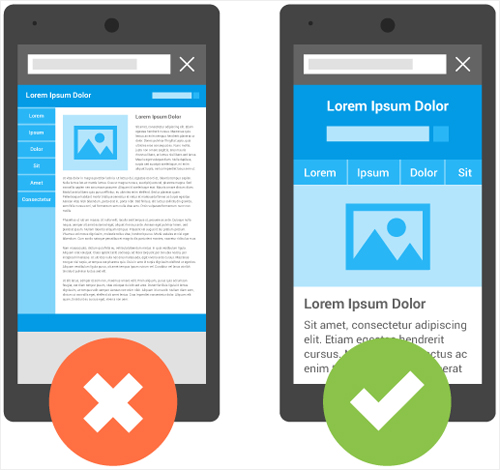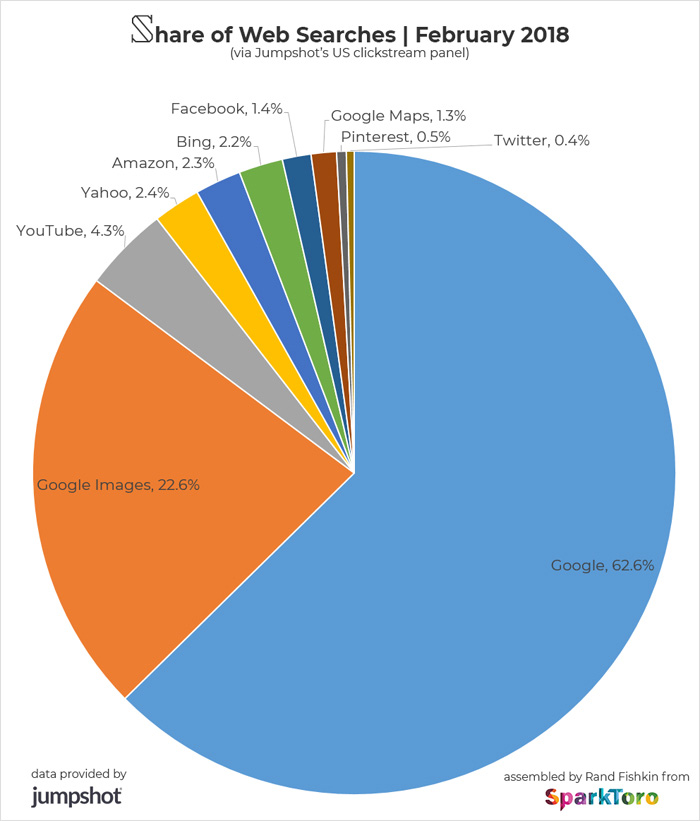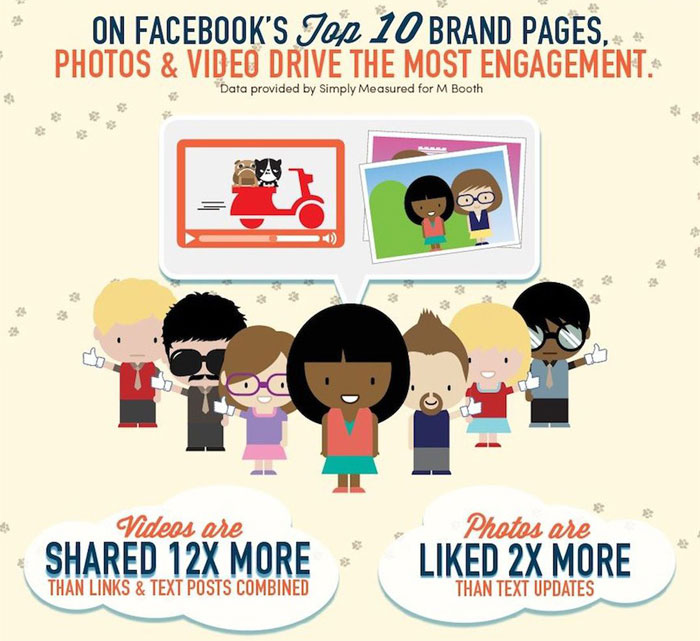In the early days of the Internet, if a website had a few grainy pictures here and there, it was enough to impress some. Throw a GIF or two onto a page, and guests might almost imagine they’d stepped into some sci-fi future!
That’s obviously not the case anymore. Pictures, videos, GIFs, and other multimedia elements are common on websites.
From an SEO perspective, they’re also essential. Yes, your site’s pages still need to feature text, but it’s important to both break up and complement the text with multimedia. The following are key reasons why:
Table of Contents
Mobile-friendliness

Statistics indicate more and more people are choosing to browse the Internet via their mobile devices instead of computers these days. There’s even reason to believe mobile browsing is now more common than desktop browsing.
You need to design your pages accordingly. If they consist of large walls of text, they’ll be difficult to read (or, more likely, scan) on a small screen. On the other hand, if you break them up with images and similar elements, you can make them far more mobile-friendly.
What does this have to do with SEO? Typically, if a user visiting one of your pages via a mobile device fnds the layout makes reading and engaging with your content challenging, they’ll click away fast. This tells Google’s algorithm that your content isn’t valuable. As a result, that page will be less likely to show up high on a results page when a user performs a relevant search. It might even end up on the dreaded second results page, which accounts for only 6% of website clicks.
Maintaining User Attention
There’s plenty of content out there on the Internet. You need to work very hard to give users a reason to engage with your site’s content for more than a few seconds. Again, if users are constantly clicking away after a few moments, your pages won’t rank high in search results.
Luckily, maintaining user attention doesn’t need to be difficult. Many users will be more inclined to continue engaging with your content if you include multimedia elements.
In the most non-condescending way possible, you should probably think of your website users as young, distracted children in school. The best teachers of young children are often those who know that delivering lessons in a boring way without “spicing them up” is sure to result in a classroom full of easily distracted kids.
Your website’s audience may not literally consist of children, but the overall principle still applies. When Youtube cat videos, social media conversations, and the latest news are all beckoning website guests away from your pages, you’ll have a better chance of keeping them interested (and reducing your bounce rate) if you offer videos, pictures, infographics, and other multimedia.
Reaching Image Searchers

An easy mistake to make when developing an SEO strategy involves forgetting that not everyone performing online searches will perform traditional website searches. For instance, research indicates approximately 20% of all web searches in the US are made via Google Images. Users can also perform video searches through Google.
If your website doesn’t have images and videos, you’re missing out on the opportunity to reach those users. Add multimedia, however, and you’ll cast a much wider net.
Increasing Time Spent on Your Site
It can’t be stressed enough: a major goal of your SEO strategy should be to ensure guests spend more time on your pages.
This is another reason to include multimedia elements in them. Specifically, you want to include videos.
Even if your text-based content is strong, you can’t control how long it takes for someone to read it. Some people may read through one of your pages in under a minute, clicking away when they’re done. They might have truly found the content engaging, but they may not be spending as much time on your page as you’d like them to.
However, the time it takes for one person to watch a video is the same amount of time it takes for anyone else. Yes, your videos need to offer value to users to ensure they decide to watch them all the way through, but with strong video content, you can theoretically exercise more power over how much time people spend on your pages.
Increasing Shareability

A strong SEO strategy doesn’t necessarily involve solely catering to Google algorithms. It also involves taking advantage of opportunities to attract more attention to your site via social media. If you make your content shareable, it’s more likely that users will, well, share it. This results in more traffic, which is essential to your SEO.
Sure, many users will still share quality text-centric content. However, it’s becoming increasingly common for social media users to share content they believe their friends, family, and followers will actually engage with. Someone might not share a blog post they found interesting simply because they don’t believe anyone who sees their post will even bother to read it.
On the other hand, they may be more willing to share a video or infographic summarizing the content of the post. They’ll know that social media friends who wouldn’t necessarily read a blog post they shared may be happy to watch a video or scan through an infographic.
This highlights an important point: in general, it’s smart to include images and other forms of multimedia on your website, but when you have the opportunity and resources to do so, it’s often best to include original multimedia (if the quality is impressive). A stock photo makes your site a little more visually interesting, but you shouldn’t expect anyone to share it. An original infographic or video, however, could be relatively shareable.
Branding
Your branding efforts and your SEO strategy go hand-in-hand. When you establish a strong and recognizable brand, website guests are more likely to return, improving your overall SEO.
Text content can’t always establish a branded identity to the same degree that visual content can. Sure, funny Tweets and on-brand ad copy can help customers get a sense of “who” your company is to an extent, but for many, visual elements are at the core of a brand. Include more of them throughout your site and content, and you’ll have more luck creating a brand that users connect with.
Reaching Users Non-Visually
Most of the multimedia elements this blog post has referenced thus far are visual in nature. However, it’s worth noting that multimedia doesn’t refer exclusively to visual content. In this context, multimedia is any type of content that isn’t merely text.
For example, you can supplement your website content with a podcast. Even if the podcast itself is made available through a platform aside from your website, you can still use it to provide information and value to customers. This may give them a reason to visit your site more often for similar valuable content, optimizing the results of your overall SEO strategy.
Yielding Engagement
Another form of multimedia content that’s easy to overlook is content that involves direct interaction, such as a game or interactive puzzle.
You shouldn’t add this type of content simply for its own sake. Interactive content should be valuable and brand-appropriate.
For example, maybe your business is a law firm. An interactive quiz game in which visitors answer questions about the law may seem like a fun addition to your site, but given your field, it’s important that your brand conveys a sense of professionalism and authority. A game could detract from that.
That said, depending on the nature of your products and services, there may be instances when it is appropriate to include games and similar interactive multimedia on your pages. Doing so could improve SEO by (like video) boosting dwell time and indicating to Google’s algorithm that your content yields active user engagement.
Standing Out
None of this is meant to imply that you shouldn’t prioritize generating and posting quality text-based content. It’s highly unlikely multimedia will replace text entirely anytime soon.
That said, you need to consider that you’re not the only business in your industry capable of posting strong blog posts, landing pages, and similar text content. Your competitors can as well.
Don’t forget, SEO is, to some degree, about competition. You want your pages to rank high in relevant search results. That means, whether you like to think about it or not, you also want your competitors’ pages to rank low (or at least lower than yours).
Thus, you need to do everything you can to ensure your content stands out when compared to that of the competition. An easy way to do so is to make it more dynamic with multimedia.
Imagine you and a competitor both have a page dedicated to the same service, like digital marketing or window washing. Perhaps the text content of both pages is more or less equal in quality. However, maybe one page consists almost exclusively of large chunks of text, while the other breaks up the monotony (and makes the content more mobile-friendly) with images and videos.
It’s easy to imagine which one will be more likely to capture and keep the attention of customers.
Keeping All Users Interested from the Start

Just as you don’t want guests clicking away from your pages after only reading through them halfway, you absolutely don’t want them clicking away within moments of opening them. This is a big red flag that tells Google’s algorithm your content is so weak it can’t even maintain user interest for more than a few seconds.
Incorporating multimedia is a way to guard against this. Specifically, you may want to incorporate various forms of communicating information on pages designed to provide guests with relatively large amounts of info.
For example, perhaps you have a page explaining to potential customers how one of your more technical or niche services works. Depending on the service, your text content may need to be somewhat lengthy for you to achieve this goal.
Some users may open the page and be willing to read a lot of text if they feel it will provide the valuable information they’re looking for. Many others might click away fast, deciding they’d prefer to get the information another way.
However, if the page also boasts an infographic and video providing essentially the same information as the text sections but in different formats, those users might be more willing to stay.
Be aware that not everyone enjoys consuming the same types of content. Including multimedia in this capacity will help you cater to nearly all users, reducing the number of people who click away from your pages mere seconds after opening them.
Using Multimedia for SEO: Important Tips to Keep in Mind
This overview should have helped you better understand why multimedia is an essential component of a thorough SEO strategy. That said, you also need to account for certain considerations when deciding how to use multimedia.
For instance, you must ensure your multimedia elements don’t result in slow load times. Research indicates mobile users will typically click away from a site if it takes longer than three seconds to load.
Consider the purpose of a multimedia element when deciding how to incorporate it without slowing down page performance. For instance, you should use different image formats based on the context. SVG is an ideal format for most logos, while JPEG tends to be the way to go for large images.
It’s also wise to improve your images and similar multimedia with alt text and, when applicable, image structure data.
And, again, your content needs to be high-quality. It should also be original when possible. Posting original multimedia content won’t always be a practical option, but you should strive to do so when you can for both SEO and branding purposes.
Keep in mind that it will only become more important for pages to include multimedia elements in the coming years. They’re simply becoming more commonplace. Users expect multimedia now. To keep users interested, make a conscious and deliberate effort to include it.
- Link Building Pricing: How Much Does it Cost in 2026? - December 1, 2025
- Online Reputation Management: Using SEO to Defend Your Online Brand & Reputation - November 24, 2025
- How to Perform an A/B Test for SEO - November 17, 2025

